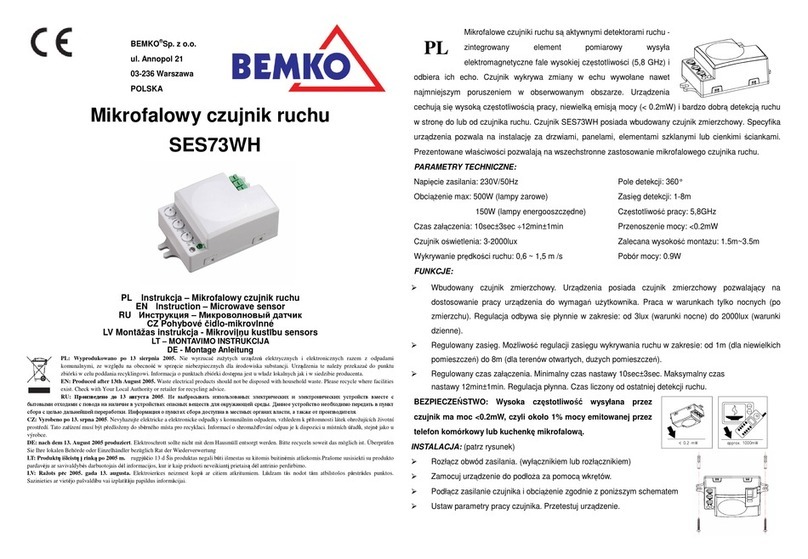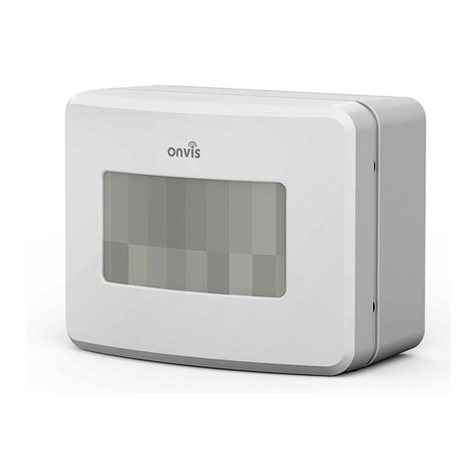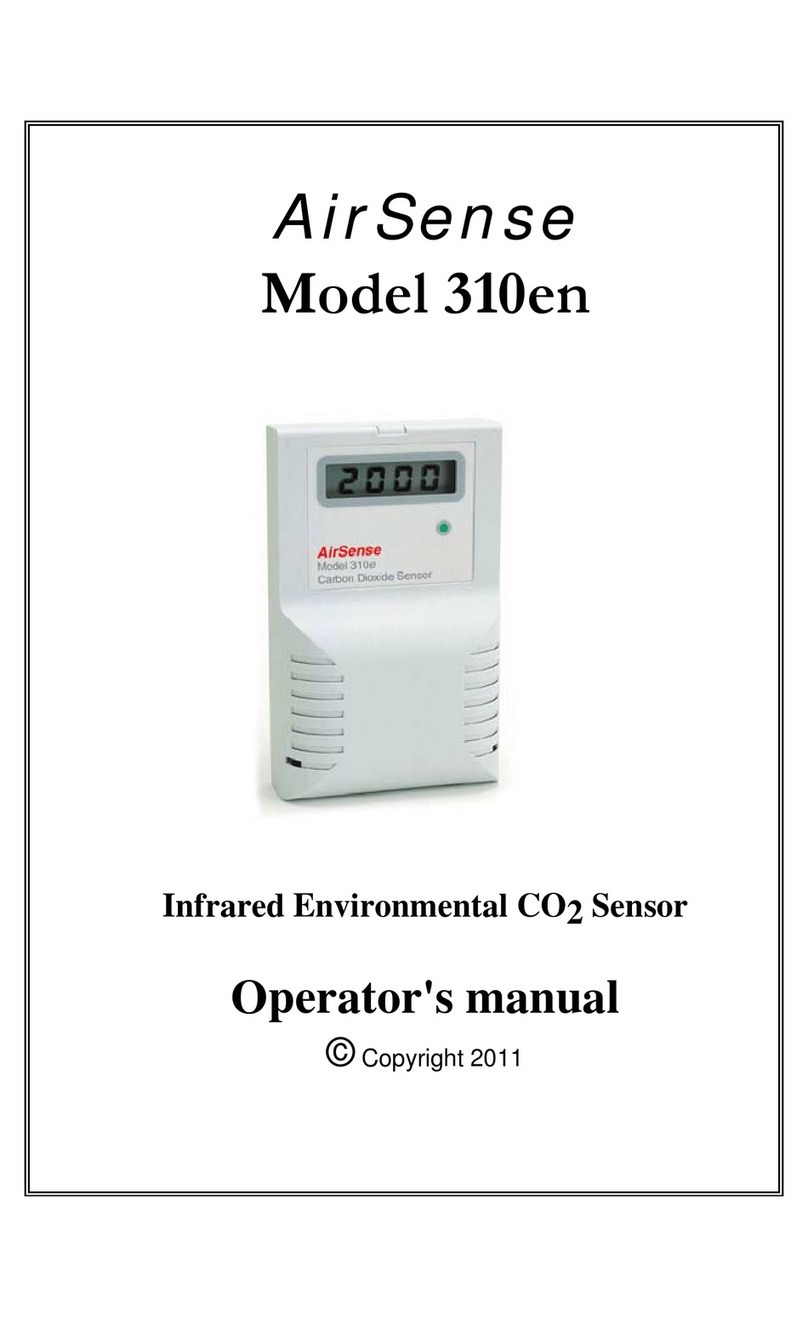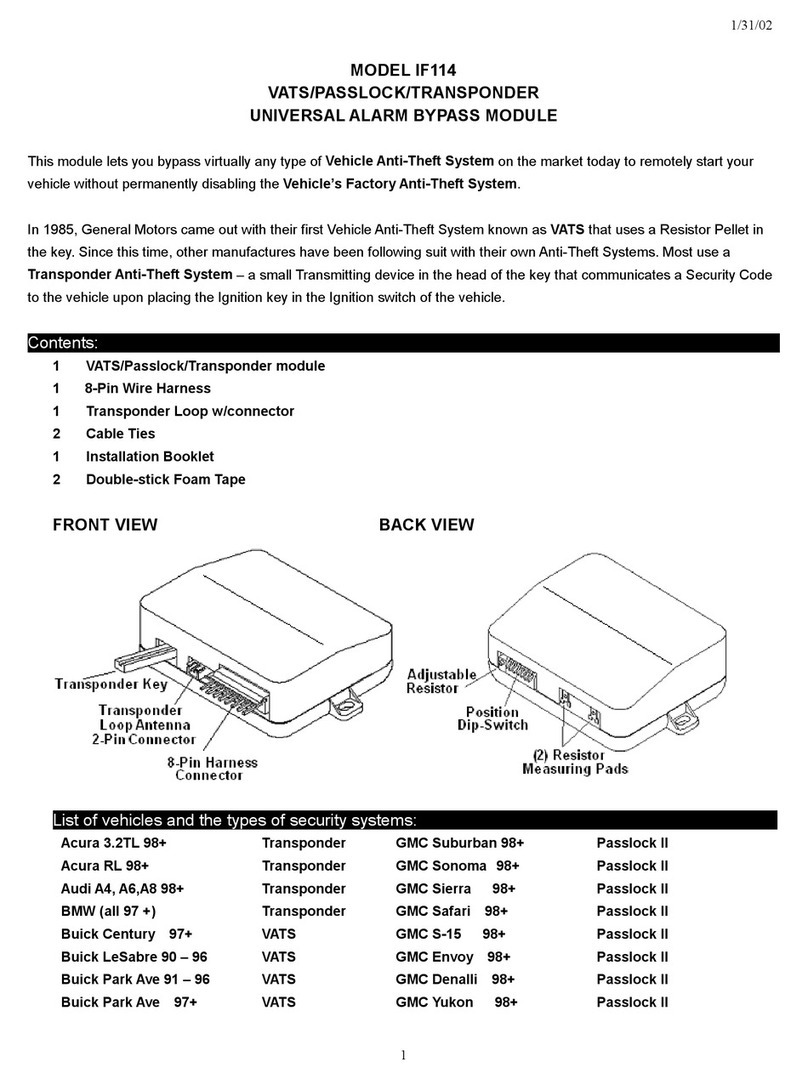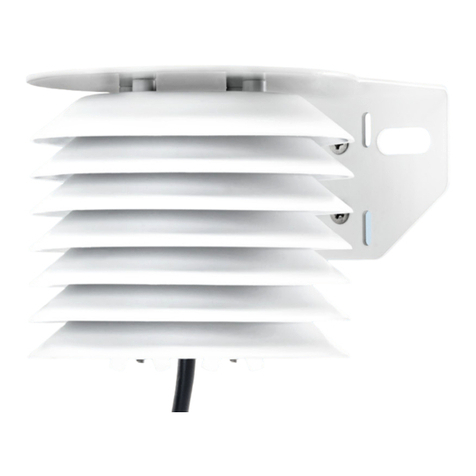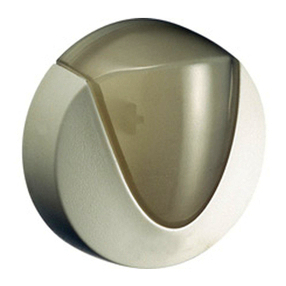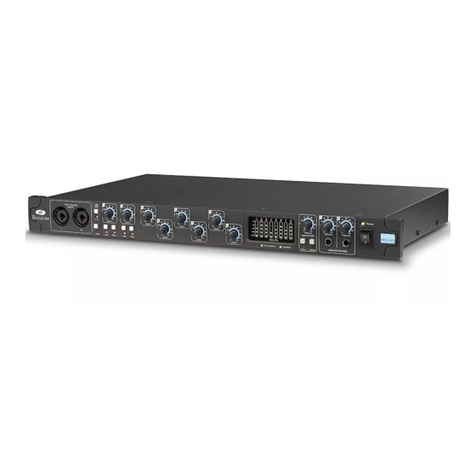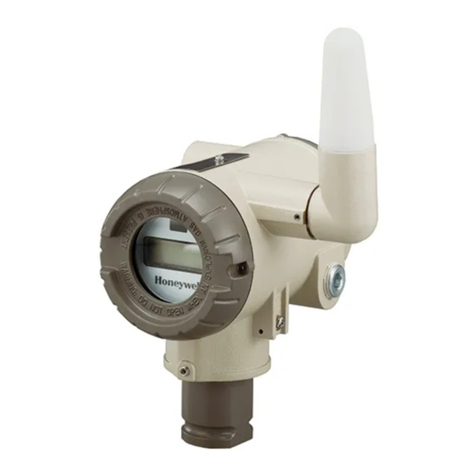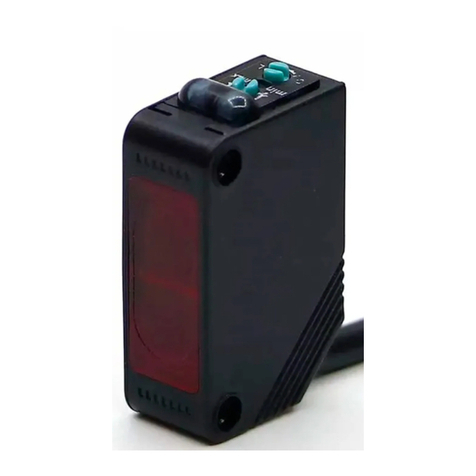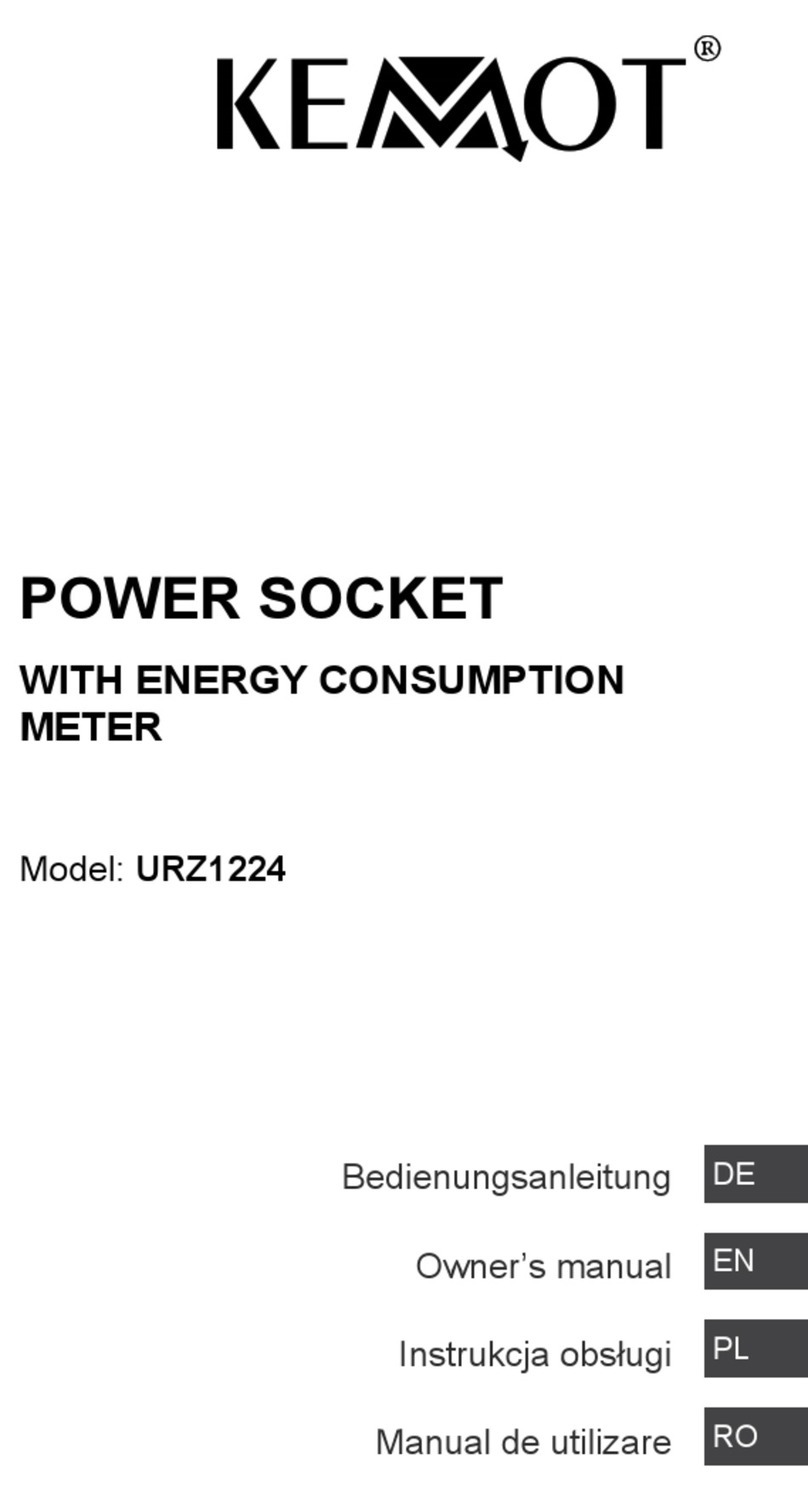Thermo 3010 Series Operating instructions

Model
3010 Series
Forma Water Jacketed CO2Incubator
Operating and Maintenance Manual
Manual No: 7003010 Rev. 0

Model 3010 Incubator ___________________________________________________________________________
i
Read This Instruction Manual.
Failure to read, understand and follow the instructions in
this manual may result in damage to the unit, injury to operat-
ing personnel, and poor equipment performance.
CAUTION! All internal adjustments and maintenance must
be performed by qualified service personnel.
Refer to the serial tag on the back of this manual.
The material in this manual is for information purposes only. The
contents and the product it describes are subject to change with-
out notice. Thermo Electron Corporation makes no representa-
tions or warranties with respect to this manual. In no event shall
Thermo be held liable for any damages, direct or incidental, aris-
ing out of or related to the use of this manual.
MANUAL NUMBER 7003010
0 -- 8/11/03 Original ccs
REV ECR/ECN DATE DESCRIPTION By

Model 3010 Incubator ___________________________________________________________________________
ii
Important operating and/or maintenance instructions. Read the accompanying text carefully.
Ce symbole attire l'attention de l'utilisateur sur des instructions importantes de fonctionnement et/ou d'entretien. Il
peut être utilisé seul ou avec d'autres symboles de sécurité. Lire attentivement le texte d'accompagnement.
Wichtige Betriebs- und/oder Wartungshinweise. Lesen Sie den nachfolgenden Text sorgfältig.
Importante instruccions de operacion y/o mantenimiento. Lea el texto acompanante cuidadosamente.
Potential electrical hazards. Only qualified persons should perform procedures associated with this symbol.
Ce symbole attire l'attention de l'utilisateur sur des risques électriques potentiels. Seules des personnes qualifiées
doivent appliquer les instructions et les procédures associées à ce symbole.
Gefahr von Stromschlägen. Nur qualifizierte Personen sollten die Tätigkeiten ausführen, die mit diesem Symbol beze-
ichnet sind.
Potencial de riesgos electricos. Solo personas das capacitadadas deben ejecutar los procedimientos asociadas con este
simbulo.
Equipment being maintained or serviced must be turned off and locked off to prevent possible injury.
Risques potentiels liés à l'énergie. L'équipement en entretien ou en maintenance doit être éteint et mis sous clé pour
éviter des blessures possibles.
Geräte, an denen Wartungs- oder Servicearbeiten durchgeführt werden, müssen abgeschaltet und abgeschlossen
werden, um Verletzungen zu vermeiden.
El equipo recibiendo servicio o mantenimiento debe ser apagado y segurado para prevenir danos.
Hot surface(s) present which may cause burns to unprotected skin, or to materials which may be damaged by elevated
temperatures.
Présence de surface(s) chaude(s) pouvant causer des brûlures sur la peau non protégée, ou sur des matières pouvant
être endommagées par des températures élevées.
Heiße Oberfläche(n) können ungeschützter Haut Verbrennungen zufügen oder Schäden an Materialien verursachen,
die nicht hitzebeständig sind.
Superficias calientes que pueden causar quemaduras a piel sin proteccion o a materiales que pueden estar danados
por elevadas temperaturas.
√ Always use the proper protective equipment (clothing, gloves, goggles, etc.)
√ Always dissipate extreme cold or heat and wear protective clothing.
√ Always follow good hygiene practices.
√ Each individual is responsible for his or her own safety.

Model 3010 Incubator ___________________________________________________________________________
iii

Model 3010 Incubator ____________________________________________________________Table of Contents
Table of Contents
Section 1 - Installation and Start-up . . . . . . . . . . . . . . .1 - 1
1.1 Name and Description of Parts . . . . . . . . . . . . . . . . . .1 - 1
1.2 Control Panel Keys, Displays and Indicators . . . . . . .1 - 2
1.3 Operating the Control Panel . . . . . . . . . . . . . . . . . . . .1 - 2
1.4 Installing the Unit . . . . . . . . . . . . . . . . . . . . . . . . . . . .1 - 3
a. Choosing the Location . . . . . . . . . . . . . . . . . . . . . .1 - 3
b. Stacking the Incubators . . . . . . . . . . . . . . . . . . . . .1 - 3
c. Preliminary Cleaning and Disinfecting . . . . . . . . .1 - 4
d. Installing the Access Port Filter . . . . . . . . . . . . . . .1 - 4
e. Installing the Air Sample Filter . . . . . . . . . . . . . . .1 - 4
f. Installing the Shelves . . . . . . . . . . . . . . . . . . . . . . .1 - 5
g. Leveling the Unit . . . . . . . . . . . . . . . . . . . . . . . . . .1 - 5
h. Connecting the Unit to Electrical Power . . . . . . . .1 - 5
i. Filling the Water Jacket . . . . . . . . . . . . . . . . . . . . .1 - 6
j. Filling the Humidity Pan . . . . . . . . . . . . . . . . . . . .1 - 6
k. Connecting the CO2 Gas Supply . . . . . . . . . . . . . .1 - 7
1.5 Incubator Start-Up . . . . . . . . . . . . . . . . . . . . . . . . . . .1 - 7
a. Setting the Operating Temperature Setpoint . . . . .1 - 8
b. Setting the Overtemp Setpoint . . . . . . . . . . . . . . . .1 - 8
c. Setting the CO2 Setpoint . . . . . . . . . . . . . . . . . . . .1 - 8
Section 2 - Calibration . . . . . . . . . . . . . . . . . . . . . . . . . . .2 - 1
2.1 Calibrating the Temperature . . . . . . . . . . . . . . . . . . . . .2 - 1
2.2 Calibrating Thermal Conductivity CO2 System . . . .2 - 1
Section 3 - Alarms . . . . . . . . . . . . . . . . . . . . . . . . . . . . . .3 - 1
3.1 Alarms . . . . . . . . . . . . . . . . . . . . . . . . . . . . . . . . . . . . .3 - 1
3.2 Sensor Fault Alarms . . . . . . . . . . . . . . . . . . . . . . . . . .3 - 1
Section 4: Routine Maintenance . . . . . . . . . . . . . . . . . .4 - 1
4.1 Disinfecting the Incubator Interior . . . . . . . . . . . . . . .4 - 1
4.2 Cleaning the Cabinet Exterior . . . . . . . . . . . . . . . . . . .4 - 2
4.3 Cleaning the Humidity Pan . . . . . . . . . . . . . . . . . . . . .4 - 2
4.4 Reversing the Door Swing . . . . . . . . . . . . . . . . . . . . .4 - 2
a. Reversing the Hinges for Exterior Door . . . . . . . .4 - 2
4.5 Replacing Fuses . . . . . . . . . . . . . . . . . . . . . . . . . . . .4 - 6
4.6 Replacing the Air Sample Filter . . . . . . . . . . . . . . . . .4 - 7
4.7 Replacing the Access Port Filter . . . . . . . . . . . . . . . . .4 - 7
4.8 Draining Water Jacket . . . . . . . . . . . . . . . . . . . . . . . . .4 - 7
4.9 Adding or Replenishing the Rust Inhibitor . . . . . . . . .4 - 7
Section 5 - Remote Alarm . . . . . . . . . . . . . . . . . . . . . . . .5 - 1
Section 6 - Specifications . . . . . . . . . . . . . . . . . . . . . . . . .6 - 1
Section 7 - Spare Parts . . . . . . . . . . . . . . . . . . . . . . . . . . .7 - 1
Section 8 - Electrical Schematics
Warranty Information
Appendix A
iv

Model 3010 Incubator ________________________________________________________Installation and Start-Up
1 - 1
Section 1 - Installation and Start-up
1.1 Name and Description of Parts
Figure 1-1
Water Jacket Incubator
• Outer Door - Reversible to opposite swing, see Section
4.4
• Heated Inner Door - Keeps chamber interior dry.
Reversible to opposite swing, see Section 4.4.
• Chamber Gas Sample Port - Used for sampling chamber
CO2content, using a Fyrite or similar instrument.
• Main Power Switch
• Control Panel - Keypad, Displays and Indicators. (See
Figure 1-2).
• Fill Port - Used for filling the water jacket.
• Water Jacket Vent- Do not cover! Allows air to escape
from the water jacket during filling and normal expan-
sion and contraction when the incubator heats or cools.
• Leveling Legs - Used to level the unit.
• Water Jacket Drain – Remove plug and use hose barb
insert included. Plug when not in use.
Note: The incubators are stackable. See Section 1.4.
*When setting up the incubator, install the cover plate
packed inside the incubator shipping carton.

Model 3010 Incubator ________________________________________________________Installation and Start-Up
1 - 2
1.3 Operating the Control Panel
The Model 3010 water jacket incubator has six modes,
which allow incubator setup. The modes are as follows:
• Run is the default mode that the incubator will normally be
in during operation.
• Set Temp is used to enter system temperature setpoints for
incubator operation.
• Set Otemp is used to enter system overtemperature set-
points for incubator operation.
• Set CO2 is used to enter system CO2setpoints for incuba-
tor operation.
• Cal Temp is used to calibrate displayed chamber tempera-
ture.
• Cal CO2 is used to calibrate displayed percentage of CO2
in the chamber.
Figure 1-2
Control Panel
1.2 Control Panel Keys, Displays and Indicators
ASILENCE - Silences the audible alarm.
BAlarm Indicators - Specific indicator flashes during an
alarm condition.
CMODE Select Switch - Used to select desired mode.
DMode Indicator - Selected mode indicator lights.
Mode Select Indicators-
Run: Normal Operation
Set Temp: Set Temperature Setpoint
Set Otemp: Set Overtemperature Setpoint
Set CO2: Set CO2Control Setpoint
Cal Temp: Calibrate Displayed Temperature (Offset)
Cal CO2: Calibrate Displayed CO2Value (Offset)
E/G Up and Down Arrows: Increase or decrease parameter
values.
FEnter: Saves the value being changed.
HHeat Indicator: Lights when power is applied to the
heaters.
IInject Indicator: Lights when gas is being injected into the
incubator.
J Displays: Displays chamber temperature, temperature set-
point or overtemperature setpoint
K Displays: Displays percentage of CO2in the chamber or
CO2setpoint

3. Remove the two plastic plugs from the bolt holes in the
exterior top of the bottom unit. Install the 1/2” long
5/16-18 stacking bolts and washers into the bolt holes -
do not tighten the bolts at this time. Refer to Figure 1-6.
4. Unscrew and remove the leveling feet from the top unit
and lift it onto the bottom unit, off-setting the base of
the top unit approximately 2-3 inches behind the stack-
ing bolts and washers.
This incubator weighs 265 lbs (120kg) before
filling. Have sufficient personnel to lift it.
5. Align the sides of the top unit with the bottom unit and
slide the top unit forward until the slots in the base of
the top unit align with the 5/16”-18 stacking bolts in the
exterior top of the bottom unit. Refer to Figure 1-7.
Model 3010 Incubator ________________________________________________________Installation and Start-Up
1.4 Installing the Unit
a. Choosing the Location
1. Locate the unit on a firm, level surface capable of sup-
porting the unit’s operational weight of 365 lbs. (166kg).
2. Locate away from doors and windows and heating and
air conditioning ducts.
3. Allow enough clearance behind the unit for electrical
and gas hook-up.
b. Stacking the Incubators
If the units have been in service, disconnect the
power cord connector and drain the water jacket
of the designated top unit before stacking.
Note: Stacking brackets (shown at left)
stacking bolts, washers, and bolts for
stacking are included with each unit.
Figure 1-3 Stacking brackets
1. Designate one incubator to be the top unit and the other
as the bottom unit. Remove the base cover plate from
the top unit using the finger holes in the base or using a
slotted screwdriver. (Figure 1-4)
2. Note the two slots in the base of the incubator which
accommodate the stacking bolts. Refer to Figure 1-5.
1 - 3
Figure 1-7
Figure 1-6
Figure 1-4
Figure 1-5

Model 3010 Incubator ________________________________________________________Installation and Start-Up
1 - 4
6. Remove and save the two screws from the back of the
control panel on the bottom unit as shown in Figure 1-8.
7. Insert the stacking brackets into the slots on the rear of
the control panel of the bottom unit (Figure 1-5). Align
the slots in the brackets with the mounting holes on the
rear of the incubators. Secure the brackets with the
screws saved above and the 1/4-20 bolts provided in the
stacking kit. A 7/16” wrench or socket will be required
for the bolts.
8. Secure the base of the top unit to the exterior top of the
bottom unit by tightening the 5/16-18 stacking bolts
using a 1/2” (13mm) wrench or suitable tool.
9. Replace the base cover on the top unit.
10. The stacked units are ready to be placed into service.
c. Preliminary Cleaning and Disinfecting
1. Remove the protective plastic coating on the shelf sup-
ports and air duct, if present.
2. Using a suitable laboratory disinfectant, disinfect all
interior surfaces including shelves and shelf supports,
door gaskets, blower wheel and CO2sensor. Refer to
Section 5.1.
d. Installing the Access Port Filter
Locate the opening in the top left corner of the interior
chamber. Remove the tape from the opening on the outside of
the unit. Locate the stopper with filter in the hardware bag.
Install in the opening inside the chamber. See Figure 1-9.
e. Installing the Air Sample Filter
1. Remove the filter from the shipping bag.
2. Separate one section of the tubing from the filter. Install
this section to the fitting on the blower plate.
3. After installing the top duct, connect the filter assembly
to the tubing coming through the top duct.
4. Insert the free end of the air sample filter tubing into the
larger hole in the back of the blower scroll. See Figure
1-9 for completed configuration.
Figure 1-9

f. Installing the Shelves
1. Install the side ducts with the tabs facing into the center
of the chamber with their slots up. There are no right
side or left side ducts, simply rotate one of them to fit
the opposite side. Tilt the side ducts as they are placed in
the chamber so the tops fit into the top air duct, then
guide them into the vertical position. Figure 1-10 shows
the duct as it would be oriented for the right side of the
chamber.
2. Referring to Figure 1-10, note that there is no difference
between left and right side shelf channels.
3. Install the shelf channels by placing the channel’s rear
slot over the appropriate rear tab on the side duct. Pull
the shelf channel forward and engage the channel’s front
slot into the side duct’s appropriate forward tab. Refer to
Figure 1-11.
4. Figure 1-12 shows one of the
channels installed on the right
side duct.
g. Leveling the Unit
Check the unit for being level by placing a bubble-style
level on one of the shelves. Turn the hex nut on the leveler
counterclockwise to lengthen the leg, or clockwise to shorten it.
Level the unit front-to-back and left-to-right.
h. Connecting the Unit to Electrical Power
See the serial tag on the side of the unit for electrical speci-
fications, or refer to the electrical schematics included in this
manual.
Connect the incubator to a grounded dedicated
circuit only.
The power cord connector is the mains disconnect
device for the incubator. Position the unit so that
it can be easily disconnected.
Plug the provided power cord into the power inlet connec-
tor (See Figure 1-13) and into the grounded dedicated circuit.
Electrical Specifications: 115V, 50/60Hz, 3.6A, 1 PH, 2W
Model 3010 Incubator ________________________________________________________Installation and Start-Up
1 - 5
Figure 1-10
Figure 1-12
Figure 1-11
Figure 1-13,
Rear Panel View, showing all options

Model 3010 Incubator ________________________________________________________Installation and Start-Up
1 - 6
i. Filling the Water Jacket
Turn the power switch on. ADD WATER will appear in the
message center. Press the Silence key to silence the alarm.
Note: The fill port has a plug that must be removed before fill-
ing and replaced after filling is complete.
Chlorine is detrimental to stainless steel. Using
chlorinated tap water will void the water-jacket
warranty!
Note: High purity water (1M to 18M ohm/cm resistivity) is a
very aggressive solvent and is considered slightly acidic. Ideal
pH for the water in the jacket is 7. Sodium hydroxide may be
used to change the pH of high purity water. It requires approxi-
mately 8ml of 0.05 normal sodium hydroxide per gallon of high
purity water to raise the pH to 7. The water jacket holds appox-
imately 12 gallons. Sodium hydroxide and the rust inhibitor
may be used in the same water jacket.
Fill the water jacket with 11.7 gallons (43.5 liters) of dis-
tilled water with a resistance range of 50K to 1M Ohm/cm
(conductivity range of 20.0 to 1.0 uS/cm). Silicone tubing and a
funnel are included in the accessory bag shipped with the unit.
For ease of connecting/disconnecting, use the silicone tub-
ing provided to connect directly to the fill port. See Figure 1-1
and this detail. Do not install vinyl
tubing directly onto the fill port as
it may be difficult to remove. A
3/8” to 3/8” hose connector has
been provided to attach lengths of
vinyl tubing to the silicone fill port
tubing, to reach the distilled water
source.
When the jacket is full, the audible alarm will sound a con-
tinuous tone for 10 seconds and the alarm condition will be
cleared. Refer to Section 4.1, Table of Alarms.
Note: Model 3010 Water Jacket Incubator is shipped from the
factory with a rust inhibitor added to the water inside the unit.
The rust inhibitor must be replenished every 2 years. See
Section 5.9 to drain the water jacket and Section 5.12 for the
correct proportion of rust inhibitor to the water.
j. Filling the Humidity Pan
For best operation of the incubator, sterilized distilled,
demineralized or de-ionized water should be used in the humid-
ity pan. Water purity should be in the resistance range of 50K
Ohm/cm to 1M Ohm/cm, or a conductivity range of 20.0 uS/cm
to 1.0 uS/cm. Refer to ASTM Standard D5391-93 or D4195-88
for measuring water purity.
Distillation systems, as well as some types of reverse
osmosis water purity systems, can produce water in the quality
range specified. Chlorinated tap water is not to be used as chlo-
rine can deteriorate the stainless steel. Tap water may also have
a high mineral content, which would produce a build-up of
scale in the reservoir. High purity, ultra pure or milli-q water is
not recommended as it is an extremely aggressive solvent and
will deteriorate the stainless steel. High purity water has a
resistance of above 1M to 18M Ohm/cm. Even high purity
water can contain bacteria and organic contaminants. Water
should always be sterilized or treated with a decontaminant,
safe for use with stainless steel as well as safe for the product,
prior to being introduced into the humidity pan.
Distilled or de-ionized water used in the humidity
pan must be within a water quality resistance
range of 50K to 1M Ohm/cm to protect and pro-
long the life of the stainless steel. Use of water out-
side the specified range will decrease the operating
life of the unit and void the warranty.
Fill the humidity pan to within 1/2 inch of the top with
sterile, distilled water. Place the pan directly on the incubator
floor to ensure optimum humidity and temperature response.
For applications requiring higher humidity conditions, the
pan should be placed against the left side wall of the incubator.
The ductwork has been modified for this purpose. Also, the CO2
sample port may be capped to assist in achieving greater RH. In
some ambients, this may cause condensation to form in the
chamber.
Check the level and change the water frequently to avoid
contamination. Do not allow the water level to fluctuate signifi-
cantly. “Dry-outs” will have an adverse effect on the humidity
level.
Detail 1

Model 3010 Incubator ________________________________________________________Installation and Start-Up
1 - 7
k. Connecting the CO2Gas Supply
High concentrations of CO2gas can cause asphyx-
iation! OSHA Standards specify that employee
exposure to carbon dioxide in any eight-hour shift
of a 40-hour work week shall not exceed the eight-
hour time weighted average of 5000 PPM (0.5%
CO2). The short term exposure limit for 15 min-
utes or less is 30,000 PPM (3% CO2). Carbon
dioxide monitors are recommended for confined
areas where concentrations of carbon dioxide gas
can accumulate.
The CO2gas supply being connected should be industrial
grade 99.5% pure and should not contain siphon tubes. Install a
two-stage pressure regulator at the cylinder outlet. The high
pressure gauge at the tank should have 0-2000 psig range and
the low pressure gauge, at the incubator inlet, should have a 0-
30 psig range. Input pressure to the incubator must be main-
tained at 15 psig (103.4 kPa).
The incubator has a serrated fitting on the back of the cabi-
net to connect the gas supply. Refer to Figure 1-13. The fitting
is labeled CO2 Inlet. Make sure that the connection is secured
with a clamp. Check fitting for leaks.
This incubator is designed to be operated with CO2
gas only. Connecting a flammable or toxic gas can
result in a hazardous condition.
Gases other than CO2should not be connected to
this equipment. CO2gas cylinders have UN1013
labeled on the cylinder and are equipped with a
CGA 320 outlet valve. Check the gas cylinder for
the proper identification labels. The CO2gas sup-
ply being connected to the incubator should be
industrial grade, 99.5% pure. Do not use CO2gas
cylinders equipped with siphon tubes. A siphon
tube is used to extract liquid CO2from the cylin-
der, which can damage the pressure regulator.
Consult with your gas supplier to ensure that the
CO2cylinder does not contain a siphon tube. Gas
cylinders should also be secured to a wall or other
stationary object to prevent them from tipping.
A two-stage CO2pressure regulator is required to
be installed on the outlet valve of the gas cylinder.
Input pressure to the incubator must be main-
tained at 15 psig (103.4 kPa) for proper perform-
ance of the CO2control system. (A single stage
CO2pressure regulator will not maintain 15 psig
(103.4 kP).
If higher purity CO2is desires inside the incubator
(greater than 99.5% pure), the pressure regulator
should be constructed with a stainless steel
diaphragm along with specifying the purity of the
CO2from the gas supplier. Follow the manufac-
turer’s instructions to ensure proper and safe
installation of the pressure regulator on the gas
cylinder. Consult your facility safety officer to
ensure that the equipment is installed in accor-
dance with the codes and regulations that are
applicable in your area.

Model 3010 Incubator ________________________________________________________Installation and Start-Up
1 - 8
1.5 Incubator Start-Up
Now that the incubator has been properly installed, con-
nected to power, filled with water, humidity pan filled, and con-
nected to gas supply, system setpoints can be entered. The fol-
lowing setpoints can be entered: temperature, over temperature,
and CO2.
a. Setting the Operating Temperature Setpoint
The temperature setpoint range is 10° to 55°C, settable to
within 0.1°C. The lowest temperature the incubator can control
is +5°C above the ambient temperature at the incubator’s loca-
tion.
This incubator is shipped from the factory with a tempera-
ture setpoint of 10°C. At this setting, all heaters are turned off.
To change the temperature setpoint:
1. Press the Mode key until the Set Temp indicator lights.
2. Press the up/down arrow until the desired temperature
setpoint is displayed.
3. Press Enter to save the setpoint.
4. Press the Mode key until the Run Indicator lights to go
to Run mode.
b. Setting the Overtemp Setpoint
The overtemp circuit is designed as a safety to
protect the incubator only. It is not intended to
protect or limit the maximum temperature of the
cell cultures or customer’s equipment inside the
incubator if an overtemp condition occurs.
The factory setting for the Overtemperature setpoint is
40°C. It can be set over a range of temp setpoint +0.5°C to
60°C. If the temperature setpoint is moved above the Overtemp
setpoint, the Overtemp will automatically update to 1.0°C + the
temp setpoint. It is recommended that the Overtemp setpoint
be 1°C over the temp setpoint.
To set the Overtemp setpoint:
1. Press the Mode key until the Set Otemp indicator lights.
2. Press the up/down arrow until the desired Overtemp set-
point is displayed.
3. Press Enter to save the setpoint.
4. Press the Mode key until the Run Indicator lights to go
to Run mode.
c. Setting the CO2Setpoint
All T/C CO2cells are precalibrated at the factory at 37°C,
high humidity, and 10% CO2, settable to within 0.1% CO2.
Therefore, if a temperature setpoint of 37°C has been entered,
the humidity pan filled, and the CO2control is to run between
0-10% with a T/C CO2sensor, the CO2setpoint may be entered
immediately. Otherwise, it is important to allow the unit 12
hours to stabilize at the temperature setpoint before entering the
CO2setpoint.
The CO2setpoint range is 0.0% to 20.0%. The incubator is
shipped from the factory with a CO2setpoint of 0.0%. At this
setting, all CO2control and alarms are turned off.
To change the CO2setpoint:
1. Press the Mode key until the Set CO2 indicator lights.
2. Press the up/down arrow until the desired CO2setpoint
is displayed.
3. Press Enter to save the setpoint.
4. Press the Mode key until the Run indicator lights to go
to Run mode.

Model 3010 Incubator ________________________________________________________________________Calibration
2 - 1
Section 2 - Calibration
After the unit has stabilized, the air temperature and CO2
display reading can be calibrated to reference instruments.
Calibration frequency is dependent on use, ambient condi-
tions, and accuracy required. Good laboratory practice would
require at least an annual calibration check. On new installa-
tions, all parameters should be checked after the stabilization
period.
Prior to calibration, the user should be aware of the follow-
ing system functions. While the unit is in Cal Temp Mode, tem-
perature control is stopped so that chamber temperature remains
stable. When the unit is in Cal CO2 Mode, CO2control is
stopped so that CO2levels remain stable. If no keys are pressed
for approximately five minutes while in either of these two
modes, the system resets to Run Mode so control can be reacti-
vated.
Before making an adjustment or calibration to the
unit, it is imperative that all reference instruments
be properly calibrated.
2.1 Calibrating the Temperature
Place the calibrated instrument in the center of the cham-
ber. The instrument should be in the airflow, not against the
shelf. Before calibration, allow the cabinet temperature to sta-
bilize.
Temperature Stabilization Periods
Start-Up - Allow 12 hours for the temperature in the cabinet to
stabilize before proceeding.
Operating Unit -Allow at least two hours after the display
reaches setpoint for the temperature to stabilize before proceed-
ing.
1. Press the Mode key until the Cal Temp indicator lights.
2. Press the up/down arrow to match the display to a cali-
brated instrument.
3. Press Enter to store the calibration into memory.
4. Press the Mode key to return to Run mode.
2.2 Calibrating Thermal Conductivity CO2System
This model has a thermal conductivity (T/C) CO2sensor.
Thermal conductivity of the incubator atmosphere is not only
effected by the quantity of CO2present, but also by the air tem-
perature and the water vapor present in the incubator atmos-
phere. In monitoring the effects of CO2, air temperature and
absolute humidity must be held constant so any change in ther-
mal conductivity is caused only by a change in CO2concentra-
tion.
Changing temperature or changing from elevated humidity
levels to room ambient humidity levels would necessitate a
recalibration of the CO2control.
T/C CO2Sensor Stabilization Periods
Start-up - The CO2sensor has been calibrated at the factory for
37°. Allow temperature, humidity, and CO2levels in the cham-
ber to stabilize at least 12 hours before checking the CO2con-
centration with an independent instrument.
Presently operating - Make sure the chamber doors are closed.
Allow at least 2 hours after the temperature and CO2displays
reach their setpoints for chamber atmosphere stabilization.
1. Make sure stabilization periods outlined above are fol-
lowed.
2. Sample the chamber atmosphere through the sample port
with an independent instrument. Sample the atmosphere
at least 3 times to ensure the accuracy of the instrument.
3. Press the Mode key until the Cal CO2 indicator lights.
4. Press the up/down arrow to change the display to match
the independent instrument.
5. Press Enter to store calibration.
6. Press the Mode key to return to Run Mode.

Model 3010 Incubator ___________________________________________________________________________Alarms
3 - 1
Section 3 - Alarms
3.1 Alarms
The Model 3010 incubator alarm system is shown in the table below. When an alarm is active, the LED next to the alarm con-
dition flashes. Pressing Silence causes all active alarms to be silenced for the ringback period. However, the visual alarm continues
until the incubator returns to a normal condition. The alarms are momentary alarms only. When an alarm condition occurs and then
returns to normal, the incubator automatically clears the alarm condition.
Temperature alarms are disabled when the temp setpoint is 10.0°C. CO2alarms are disabled when the CO2setpoint is 0.0%. The
Low Temp alarm delay is set to 9 hours automatically on system power-up. This allows the user to avoid nuisance alarms when the
system is first turned on. If the temp comes within the alarm limits prior to the 9 hour delay, the alarms will be enabled.
Alarm Description Delay Ring-back Trips Remote
Alarm Contacts
Over Temp Temperature is greater than
Over Temperature setpoint
0 min. 15 min. Yes
Low Temp Temperature is at least 1°C
lower than the temperature
setpoint
15 min. 15 min. Yes
High CO2 CO2is at least 1% higher
than the CO2setpoint
15 min. 15 min. Yes
Low CO2 CO2is at least 1% lower
than the CO2setpoint
15 min. 15 min. Yes
Add Water Water is low in jacket 0 min. 15 min. No
Door Open Inner glass door is open 15 min. 15 min. No
*Temp Display Flashes
(Run Mode)
Temperature sensor failure 0 min. 15 min. No
*CO2 Display Flashes
(Run Mode)
CO2sensor failure 0 min. 15 min. No
Table 3-1
* The microprocessor in the incubator continually scans the sensors to ensure they are operating properly. Should
an error be detected, the affected display flashes and the alarm sounds. If such an alarm occurs, contact your
local distributor or the Technical Services department at 740-373-4763 or 1-888-213-1790 ext. 2050 (USA and Canada)
or fax 740-373-4189.
All alarm delays and ringback times are ±30 seconds.

Millcreek Road, Box 649 • Marietta, Ohio 45750 USA • 740-373-4763
PREVENTIVE MAINTENANCE
Model 3010 Series Water Jacket Incubators
Your equipment has been thoroughly tested before shipment. Regular preventive maintenance is important to keep your unit
functioning properly. The operator should perform routine cleaning and maintenance on a regular basis. For maximum performance
and efficiency, it is recommended the unit be checked and calibrated periodically by a qualified service technician.
The following is a condensed list of preventive maintenance requirements. See the specified section of the operating manual for
further details.
We have qualified service technicians, using NIST traceable instruments, available in many areas. For more information on Preventive
Maintenance or Extended Warranties, please contact us at the number listed below.
Cleaning and calibration adjustment intervals are dependent upon use, environmental conditions and accuracy required.
Tips for all incubators:
x Do NOT use bleach or any disinfectant that has high chloros
x Use sterile, distilled or demineralized water.
x Avoid spraying cleaner on the CO2sensor.
x Do not use powdered gloves for tissue cultures.

Model 3010 Incubators ___________________________________________________________________ Preventive Maintenance
Refer to Manual
Section
Action Daily Weekly Monthly 3 to 6
Months
Yearly 2 years
-- Check CO2tank levels. 9
-- Inspect door latch, hinges and door gasket seal.
9
1.4j Check water level in the humidity pan, ½” from top 9
2.1, 2.2 * Verify and document CO2and temperature calibration, as
applicable
9
4.1
4.3
Perform a complete decontamination procedure. Wipe down
interior, shelves and side ducts with disinfectant. Change or clean
blower wheel and scroll. Clean top duct. Clean humidity pan.
Rinse everything well with sterile distilled water.
Between experiments
More frequent decontamination may be required, depending
on use and environmental conditions
1.4d, 1.4e Change HEPA and gas filters, if applicable (or as needed) 9
4.9 Replenish rust inhibitor in water jacket. 9
* Qualified service technicians only

Model 3010 Incubator __________________________________________________________________Maintenance
Section 4: Routine Maintenance
Before using any cleaning or decontamination
method except those recommended by the
manufacturer, users must check with the
manufacturer that the proposed method will not
damage the equipment.
4.1 Disinfecting the Incubator Interior
If the units have been in service, dis-
connect the power cord connector
before disinfecting.
Use an appropriate disinfectant. All articles and surfaces to
be disinfected must be thoroughly cleaned, rinsed and rough-
dried.
Alcohol, even a 70% solution, is volatile and
flammable Use it only in a well ventilated area
that is free from open flame. If any component is
cleaned with alcohol, do not expose the compo-
nent to open flame or other possible hazard.
Allow the alcohol to fully dry before turning
power on.
Do not spray the T/C sensor with flammable solu-
tions. The internal temperature of the CO2sen-
sor is approximately 150°C when the unit is in
operation. Allow sufficient time for the sensor to
cool before cleaning.
Do not use strong alkaline or caustic agents.
Stainless steel is corrosion resistant, not corrosion
proof. Do not use solutions of sodium hypochlo-
rite (bleach), as they may also cause pitting and
rusting.
1. Turn the incubator off and disconnect the plug from the
power source.
2. Remove the shelves, access port filter and side duct
sheets. Remove the temperature sensors and the air sam-
ple filter tubing from the back of the blower scroll.
Refer to Figure 4-1.
3. Remove the filter from the air sample filter tubing.
4. Remove the wingnuts securing the top duct to the interi-
or. Carefully slide the top duct down and off the temper-
ature sensor, air sample filter tubing.
5. Wash the shelves, ducts, wingnuts and stopper with dis-
infectant and rinse with sterile water. Option: Autoclave
shelves, ducts and wingnuts.
6. Remove the blower scroll by first pushing the black
lever clip closest to you toward the scroll. Then turn the
scroll to the right to disengage it from the blower scroll
plate. Some manipulation may be required as the align-
ment holes are keyhole-shaped.
7. Remove the remaining wingnut, then pull down on the
blower wheel. If a new wheel and scroll are going to be
used, discard the old ones. If the old ones are being
reused, wash all parts with disinfectant and rinse with
sterile water.
8. Remove the blower scroll plate by first pushing the
black lever clip toward the chamber ceiling. Then turn
the plate to the left to disengage it from the alignment
keyholes. Clean as above, or autoclave.
9. Wash the cabinet interior with disinfectant starting at the
top and working down. Wash the inner door both inside
and out. The cabinet and door must be rinsed with sterile
water until the disinfectant has been removed. After the
cabinet has been rinsed, spray with 70% alcohol.
10. Reinstall the blower scroll plate by aligning it with the
larger end of the keyholes and turning it to the left to
lock it on. Pull the black lever clip downward from the
ceiling.
11. Install the blower wheel onto the
motor shaft, aligning the d-shaped
flat sides of each. See Figure 4-2.
Secure the blower wheel with the
wingnut. Make sure the wheel turns
freely.
12. Locate the blower scroll over the
blower wheel into the larger end of
the keyholes on the scroll plate. Turn the scroll to the
right to lock it into the keyholes. Pull the black lever
clip closest to you toward the front of the unit.
Figure 4-2
4 - 1 Figure 4-1

Model 3010 Incubator __________________________________________________________________Maintenance
13. Install the top duct by feeding the temperature sensors,
air sample tubing through the appropriate holes in the
duct as it is raised to the top of the chamber. Be careful
not to pull the grommets through the duct (Figure 4-3).
14. Locate the mounting studs and blower scroll into the
appropriate holes in the top duct and install the wingnuts
to secure the duct.
15. Install the air sample filter onto the top duct tubing.
16. Carefully pull the temperature sensor and air sample fil-
ter tubing down until they can be inserted approximately
1 inch into the appropriate holes in the back of the blow-
er scroll. See Figure 4-4.
17. Install the left and right ducts, and the access port stop-
per with filter, spraying each with 70% alcohol (do not
saturate).
18. Install the shelves and spray with 70% alcohol.
19. Plug the incubator in and turn the power switch on.
Allow the unit to run empty for 24 hours before return-
ing to service.
4.2 Cleaning the Cabinet Exterior
Clean the incubator exterior with a damp sponge or soft,
well-wrung cloth and mild detergent dissolved in water. Dry
with a soft cloth.
4.3 Cleaning the Humidity Pan
Clean the humidity pan with soap and water and a general
use laboratory disinfectant. Rinse with sterile water and spray
with 70% alcohol. The humidity pan may be autoclaved.
4.4 Reversing the Door Swing
For side-by-side operation or changing lab layouts, the
inner and outer doors are field-reversible. The procedure is
written from the prospective of changing the door swing from a
left-hand to a right-hand swing. All screw holes are pre-drilled
for reversing the door. The tools required are a Phillips and a
flatblade screwdriver.
If the units have been in service, disconnect the
power cord connector before reversing the door
swing.
a. Reversing the Hinges for Exterior Door
Refer to Figure 4-7A. The following instructions will refer
to the letters within the circles.
1. Open the outer door and remove it by lifting it off the
hinge pins. Lay this door down on its face on a padded
surface to prevent scratches.
2. Remove the two outer door hinges identified by the “A”
in the illustration.
3. Remove the four nylon screws in locations “B”, which
will be the new locations for the inner door hinges.
4. With the Phillips screwdriver, remove and save the four
nylon screws from the outer door hinge mounting holes,
noted as loca-
tions “C” on
the right side
of the door
frame.
5. Remove the
electrical con-
nector on the
top of the
inner door
hinge by care-
fully prying
up the black
strain relief. Figure 4-5
Figure 4-4
Figure 4-3
4 - 2

11. Remove the two nylon screws at location “G”.
12. Remove the door strike plate at location “H” and install
the two nylon screws just removed into the vacant holes.
13. Remove the two outer Phillips screws on the frame
beneath the control panel, identified as “I” in the illus-
tration. Remove only the two outer screws and pull the
electronics tray out about one-inch.
14. Verify that the nylon screws have been installed in the
vacant door strike holes, identified as “J” (Figure 4-7B).
15. Move the door heater cable to the slot on the right side
of the tray as shown in location “K”.
16. Push any excess cable into the tray area, making sure the
wire will not be damaged when the tray is pushed back
in and secured.
17. Install the lower inner door hinge, identified as location
“L” in the drawing. (This was the top inner door hinge
removed in Step 8 and should have the white plastic
bushing installed.) Do not completely tighten the screws.
18. Insert the inner door into the lower hinge with the latch
to the left. Align the door to the chamber opening and
place the upper hinge in position as identified as “M”.
19. Insert the screws into the hinge but do not completely
tighten them.
20. Match the pins on the yellow
connector with the socket on the
door. Press the connector com-
pletely into the socket and slide
the strain relief down until no
yellow is visible on the plug as
shown in “N” of Figure 4-6.
Manufacturer instructions follow.
To Attach:
1. Be sure black locking
sleeve is pulled back.
2. Line up pins and push
connector onto plug.
You will feel a “snap.”
Do not twist.
3. Push locking sleeve forward
on connector until it is
flush with the front of the
connector.
4. If sleeve is difficult to slide
on a new connector,
“exercise”it a few times.
Do not use tools.
4 - 3
Model 3010 Incubator __________________________________________________________________Maintenance
6. Refer to item “D” in Figure 4-7A. The heater wiring
connector is of yellow rubber which should be visible
when the strain relief is moved upward as shown. Refer
to connector manufacturer’s instructions below.
7. Grasp the upper portion of the yellow connector and pull
it up and out of the hinge socket.
8. Remove the inner door upper hinge, shown as “E”. This
hinge will be inverted and become the lower inner door
hinge when the hardware is reassembled. When remov-
ing the door, set it aside on a flat surface, taking care
not to damage the electrical sockets on the top and bot-
tom of the door frame. At this time, remove the 5/8”
black plastic bushing from the hinge. This bushing will
be inserted in the top hinge when the door is installed on
the right side of the cabinet.
Electrical connectors are mounted on the frame
along the hinge side of the inner glass door at
both the top and bottom of the door. Be careful
not to damage the connectors by resting the
weight of the door on them. Place the inner glass
door on a flat surface where it cannot be dam-
aged before moving on to the next step.
9. Remove the lower inner door hinge, “F”. Note that this
hinge will be inverted and become the upper inner door
hinge when the hardware is reassembled. Also, remove
the 1” long white plastic bushing from the center of the
hinge and insert it into the hinge removed in the step
above.
10. The shoulder of the bushing must be on top as shown in
Figure 4-7. Install the black plastic bushing into the
hinge just removed and which will be the top hinge
when the door is reversed. Refer also to Figure 4-5.
Figure 4-6
1. Do not twist.
2. Pull locking sleeve back
to “unlocked”position.
3. Pull connector
straight off.
4. Leave locking sleeve in
unlocked position.
To Detach:
Table of contents
Other Thermo Accessories manuals

